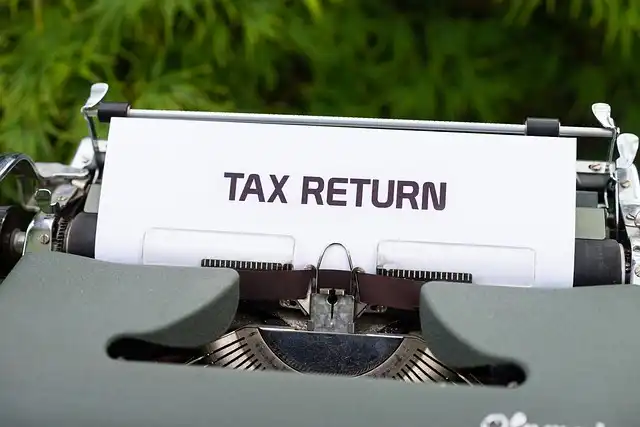Improving Federal Government: Efficiency, Transparency & Public Service

Enhancing federal government requires a focus on public service, not corporate models. Improving efficiency, transparency, and accountability are vital through technology and critical resource allocation.
COMMENTARY|After serving under head of states from Johnson to Obama, David Mader has seen what jobs and what does not in federal government and why enhancing it has to do with making it offer the public much better, not running it like a company.
Public Service Career Insights
As our country approaches its 250th anniversary, it’s worth reflecting on exactly how our democracy and its 3 branches of federal government have shaped the policies, regulations and establishments that keep the country running day to day. I’ve seen many executive branch efforts, from Transforming Federal Government to the Program Assessment Score Tool (COMPONENT) to multiple versions of the president’s monitoring schedule, each looking for to boost how federal government operates. And Congress, also, on a bipartisan basis, has actually established legislation focused on improving federal government performance and responsibility.
My occupation in public service began during university as a part-time Postal Service employee under the Johnson administration and wrapped up decades later as a political appointee at the end of the Obama administration. Over that span, I had the opportunity of serving in every administration, Republican politician and Democratic alike, and seeing firsthand exactly how our federal government advances to fulfill the changing requirements of the American individuals.
Technology & Government Efficiency
Technology has actually long given chances to boost the “how” of government. Artificial intelligence and automation currently promise even greater gains, however just if we use them intelligently. With future budget plans constricted and a $37 trillion public debt, we must look critically at just how we allocate resources and require more transparency in the outcomes accomplished.
Government vs. Business: A Key Difference
For as lengthy as I can bear in mind, there have been persistent contact us to “run federal government like a service.” While the sentiment has quality– we absolutely ought to pursue better effectiveness and performance– it’s necessary to identify a vital difference: federal government’s bottom line isn’t profit or investor worth. It’s the fair, clear and fair shipment of public programs and plans set by both the executive branch and Congress.
As a job exec, I saw my task as making organization processes and business structures that implemented programs effectively, gauged end results efficiently, and offered the general public self-confidence that their tax obligation dollars, voluntarily contributed by people and organizations alike, were generating results. Because feeling, taxpayers are the government’s closest analog to shareholders.
Practical Steps for Improvement
Unlike private-sector companies, government can not merely terminate programs that underperform; doing so requires both legislative and executive contract. That makes self-displined monitoring practices all the more crucial. As the old saying goes, craziness is doing the exact same point over and over again and anticipating various results. To avoid that destiny, right here are some practical actions we can take:
As our country approaches its 250th wedding anniversary, it’s worth showing on exactly how our freedom and its 3 branches of federal government have actually formed the policies, laws and establishments that keep the nation running day to day. I have actually seen numerous executive branch efforts, from Transforming Federal Government to the Program Analysis Rating Tool (PART) to several versions of the president’s monitoring agenda, each looking for to enhance just how government runs. While the view has value– we absolutely must make every effort for better efficiency and effectiveness– it’s vital to identify a key difference: federal government’s bottom line isn’t profit or investor worth. Modern technology has actually long given possibilities to improve the “just how” of federal government. Unlike private-sector companies, federal government can’t merely terminate programs that underperform; doing so requires both legal and executive agreement.
There are, certainly, numerous other concepts worth considering. My hope is that these recommendations spark a broader discussion, one that honors our background while testing us to make federal government much more receptive, clear and accountable to individuals it offers.
Streamline & Modernize Government
What should be maximized or automated? For the functions that continue to be crucial, simplify and modernize them. Enhance workflows for efficiency and accountability and automate routine, necessary tasks wherever feasible so team can focus on mission-critical work.
Eliminate Redundancy
What should be gotten rid of? Determine programs, tasks and procedures that no longer offer a clear function or replicate initiatives in other places. Removing what’s repetitive or outdated frees resources for higher-value top priorities.
Instead than presuming last year’s budget plan as a starting point, agencies ought to validate each program and expenditure based on present needs and measurable end results. This data-driven strategy will aid decision-makers straight funding toward what jobs and reconsider what doesn’t.
1 accountability2 data transparency
3 federal government
4 government efficiency
5 Public Service
6 resource allocation
« Government Shutdown Backpay Delay: Employees Await PaymentInterior Dept. Reorganization: Budget Concerns & Controversy »
